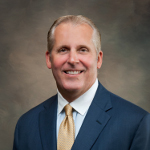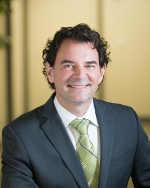Healthcare is an exciting field to work in as technology evolves to improve patient outcomes and rules change to grant broader access to medical care across the United States.
However, it's also a challenging space with rapid updates and new regulations making it more difficult to bring new ideas to the marketplace than in the past. Additionally, healthcare providers are consolidating — leading a trend that now includes payers as well as medical device companies.
But there are shining examples of companies and their surgeon partners who are innovating — both clinically and operationally — to meet the needs of their patients and today's healthcare system. Titan Spine has made significant headway over the past year with device launches, releases and a new implant warranty that's snagging the attention of surgeons and hospitals across the country.
Growth opportunities
In July the company received FDA clearance to launch the Endoskeleton TL for lateral spinal fusion in the United States. The Endoskeleton TL is the first lateral fusion device to feature surface technology designed to participate in the fusion process; it creates an osteogenic response to the implant's topography.
 "Being the first to market for a lateral device that features surface technology is a major advancement for Titan Spine," says Titan Spine President Kevin Gemas. "The lateral market is the fastest-growing segment of the spine industry. We are pleased to have a truly differentiated offering for this segment."
"Being the first to market for a lateral device that features surface technology is a major advancement for Titan Spine," says Titan Spine President Kevin Gemas. "The lateral market is the fastest-growing segment of the spine industry. We are pleased to have a truly differentiated offering for this segment."
The global spine surgery device market was $11.5 billion in 2012, but is expected to grow at a 5.1 percent compound annual growth rate over the next three years to reach $14.8 billion by 2017, according to a MarketsandMarkets report. However, one of the big challenges across medtech is reimbursement versus price. Providers are seeing less growth in spine surgery reimbursement than in the past and are paying more attention to clinical effectiveness as well as cost.
"Our biggest challenge to date has been to make surface technology relevant to our surgeon customers since it has not been an area of technical focus until we demonstrated the positive results of surface technology in spinal fusion," says Mr. Gemas. "Now that we have seen significant success from both a sales and patient outcomes standpoint, we feel our biggest challenge moving forward is the inevitable attempts by competitive companies to claim equivalent or superior surface technology."
Clinical evidence
The report also mentioned a trend toward less invasive procedures that lower infection risk, bleeding and post-surgical pain to improve recovery length. Spinal fusion products to enhance fusion, such as the Endoskeleton TL, are also gaining steam.

That strong partnership with surgeons and scientists is what gives Titan Spine the edge as other companies look to develop similar technologies. Titan Spine has worked with their experts for the past eight years to develop their current proprietary technology and plan to continue innovating in that space.
"We are the true leaders in surface technology and we continue to develop spine solutions using this innovative surface technology for the benefit of physicians and patients," says Mr. Gemas. "[We see the company growing] by continuing to aggressively promote our proprietary surface technology for the interbody device market."
Clinically, the company received accolades earlier this year from the Scoliosis Research Society at the International Meeting on Advanced Spine Techniques. A paper featuring Titan Spine devices received the Whitecloud Basic Research Award.
"Our findings further established that the combination of interbody device material and design is essential," says Dr. Slosar. "The results of the study have great importance to spine surgeons. We now know conclusively that the materials we implant in our patients can stimulate stem cells to behave differently, either promoting one formation or creating inflammation and fibrosis."
The titanium alloy surface with a complex micron scale and submicron scale roughness in Titan Spine's Endoskeleton TL promotes a cellular response that favors bone formation. Other materials have shown to create the inflammation response, which is more likely to lead to fibrous tissue formation.
Business strategy
Improving healthcare infrastructure, broadened insurance coverage and the expanding private healthcare sector are growth drivers in the marketplace. However, without significant value surgeons may not change from their former devices or techniques. As a result, device companies are looking for new ways to appeal to providers and Titan Spine is out front of a new trend: guaranteeing outcomes. The company launched a warranty program this year.
 "Over the last few months, we've received positive feedback regarding our warranty from the field and we are proud to offer it as a testament to the knowledge that our products are engineered for optimal success in patients," says Peter Ullrich, MD, former surgeon and CEO of Titan Spine. "Ultimately, the warranty demonstrates the significant confidence we have in our products and the science validating our surface technology."
"Over the last few months, we've received positive feedback regarding our warranty from the field and we are proud to offer it as a testament to the knowledge that our products are engineered for optimal success in patients," says Peter Ullrich, MD, former surgeon and CEO of Titan Spine. "Ultimately, the warranty demonstrates the significant confidence we have in our products and the science validating our surface technology."
The warranty offers a free one-time replacement for any eligible Titan spinal interbody fusion device if a revision surgery is required within the five-year warranty period, as outlined within the terms of the agreement. Other healthcare organizations have warranties and guarantees for orthopedic joint replacement procedures, but Titan Spine is among the first spine-specific device companies to guarantee their products.
The company has made great strides in 2014, but isn't done for the year yet. "We are excited to rapidly ramp up sales of our TL lateral product and launch additional interbody devices using our surface application before the calendar year ends," says Mr. Gemas. "These are truly exciting times for Titan Spine."
The global spinal fusion market is expected to reach $1 billion by 2017 with a 19 percent growth rate in the United States over the next three years. However, the biggest opportunities for growth are in developing countries around the world. Many orthopedic and spine device companies — both small and large — are expanding overseas and marketing to surgeons across the globe.
"We are seeing tangible signs that the market is shifting away from inert spacers and toward devices like ours that feature surface technology and participate in the fusion process," says Mr. Gemas. "We will also grow revenue as we continue to expand our product portfolio and the markets we serve worldwide."

